The Letter to the Romans: Paul among the Ecologists
Published: Sep 2017
£23.00 – £60.00
'What God has joined together, let no one put asunder' is a motto for this commentary. Against a prevailing theological tradition that God's compassion is for human beings only and not also for non-human creation and the earth, Tonstad raises his voice in protest. The 'sundering' omissions are so monumental that only a renewed reading of Romans from the ground up can hope to undo them.
If we read Romans through the eyes of Tonstad, Paul will be found to be speaking about the faithfulness of Christ and not only about faith in Christ; he will describe sin in societal terms and not only as a problem of individuals; his enigmatic 'I' in Romans 7 will tell the story of Eve and not only rehash his own biography; and Paul will give voice to non-human creation and the earth to a degree that is elsewhere heard in the Bible only in the Old Testament and, of course, hardly ever in the pulpit or the seminary.
The theology of Romans will turn out to be an inclusive theology of divine compassion rather than a theology of divine sovereignty, arbitrarily exercised. On the theological foundation of compassion, Paul outlines an ethical vision of compassion in human community, with regard to citizenship and government, and in the mixed fellowship of Jews and Gentiles in the house churches in Rome. Paul's ecological bona fides are inseparable from his theological vision and not an imposition from without; his call to mercy blends with the best and most urgent sentiments of contemporary ecologists.
In the striking reciprocity between theology and ecology in Romans, Paul puts on display what God has joined together, and, better still, what God has done to join together all that is asunder.
The Letter to the Romans: Paul among the Ecologists
£23.00 – £60.00
'What God has joined together, let no one put asunder' is a motto for this commentary. Against a prevailing theological tradition that God's compassion is for human beings only and not also for non-human creation and the earth, Tonstad raises his voice in protest. The 'sundering' omissions are so monumental that only a renewed reading of Romans from the ground up can hope to undo them.
If we read Romans through the eyes of Tonstad, Paul will be found to be speaking about the faithfulness of Christ and not only about faith in Christ; he will describe sin in societal terms and not only as a problem of individuals; his enigmatic 'I' in Romans 7 will tell the story of Eve and not only rehash his own biography; and Paul will give voice to non-human creation and the earth to a degree that is elsewhere heard in the Bible only in the Old Testament and, of course, hardly ever in the pulpit or the seminary.
The theology of Romans will turn out to be an inclusive theology of divine compassion rather than a theology of divine sovereignty, arbitrarily exercised. On the theological foundation of compassion, Paul outlines an ethical vision of compassion in human community, with regard to citizenship and government, and in the mixed fellowship of Jews and Gentiles in the house churches in Rome. Paul's ecological bona fides are inseparable from his theological vision and not an imposition from without; his call to mercy blends with the best and most urgent sentiments of contemporary ecologists.
In the striking reciprocity between theology and ecology in Romans, Paul puts on display what God has joined together, and, better still, what God has done to join together all that is asunder.
Persuading God: Rhetorical Studies of First-Person Psalms
Published: Sep 2017
£19.00 – £45.00
Written by a scholar of rhetoric, Persuading God demonstrates that the first-person psalms that make up over a third of the Book of Psalms were designed not simply to express the feelings of individual Israelites but to persuade God to act.
The book casts a new light on the roles of all the players in the situations in which the psalms were composed and performed: the person represented by the speaker on whose particular troubles the psalm is based, the spectators and opponents who are sometimes addressed directly by the speaker, the poet-musicians who craft the speaker's case and occasionally undermine it, and most of all, God as the direct addressee whose presumed openness to persuasion and willingness to intervene underlie the entire event.
The readings provide new explanations for many long-standing puzzles: how to deal with the long string of imprecations in Psalm 109, whether Psalm 4 is best read as protesting a false accusation or as countering apostasy, why so many verses in Psalm 62 begin with the exclamation ach , and, more generally, why so many first-person psalms seem to swing abruptly between despair and praise.
The book demonstrates the relevance of contemporary rhetorical theory to Hebrew Bible studies, including the work of ChaÌøm Perelman and Lucie Olbrechts-Tyteca, Kenneth Burke, and Mikhail Bakhtin. It also illuminates the state of rhetorical practice in the ancient Near East at the same time that rhetorical theories were first being codified and taught in archaic and classical Athens.
Persuading God: Rhetorical Studies of First-Person Psalms
£19.00 – £45.00
Written by a scholar of rhetoric, Persuading God demonstrates that the first-person psalms that make up over a third of the Book of Psalms were designed not simply to express the feelings of individual Israelites but to persuade God to act.
The book casts a new light on the roles of all the players in the situations in which the psalms were composed and performed: the person represented by the speaker on whose particular troubles the psalm is based, the spectators and opponents who are sometimes addressed directly by the speaker, the poet-musicians who craft the speaker's case and occasionally undermine it, and most of all, God as the direct addressee whose presumed openness to persuasion and willingness to intervene underlie the entire event.
The readings provide new explanations for many long-standing puzzles: how to deal with the long string of imprecations in Psalm 109, whether Psalm 4 is best read as protesting a false accusation or as countering apostasy, why so many verses in Psalm 62 begin with the exclamation ach , and, more generally, why so many first-person psalms seem to swing abruptly between despair and praise.
The book demonstrates the relevance of contemporary rhetorical theory to Hebrew Bible studies, including the work of ChaÌøm Perelman and Lucie Olbrechts-Tyteca, Kenneth Burke, and Mikhail Bakhtin. It also illuminates the state of rhetorical practice in the ancient Near East at the same time that rhetorical theories were first being codified and taught in archaic and classical Athens.
About Earth’s Child: An Ecological Listening to the Gospel of Luke
Published: Sep 2017
£20.00 – £60.00
How does sensitivity to current ecological and environmental issues impact on our hearing of the Gospels? About Earth's Child listens for the ecological sounds that are present in Luke's narrative symphony and offers a way for readers today to identify them.
Michael Trainor approaches Luke's Gospel with a fresh engagement while respecting the evangelist's own purposes in addressing the social and cultural concerns of first-century followers of Jesus. Hearing the Gospel from an ecological perspective allows us to see how Luke presents Jesus as 'Earth's Child'. In the Gospel's early chapters, Jesus is presented as born of Earth, wrapped with Earth's cloth and laid in Earth's manger. In the final chapters, he is affixed to Earth's wood and laid in Earth's receptacle from where he is resurrected and meets his disciples.
Between these opening and closing chapters a remarkable story of Earth unfolds. This concerns all Earth's members, human and non-human, organic and inanimate. It is about God, angels, demons, human beings, soil, seeds, mountains, waters, animals (even ravens, pigs and a couple of asses). Luke presents a fundamental truth about following Jesus: how one treats Earth and freely shares its fruits are central. An authentic disciple of Jesus is ecologically contemplative and environmentally respectful. About Earth's Child sparkles with surprising insights as Jesus' teaching and his meal and healing ministries take on new meaning for today's world faced with growing environmental challenges.
About Earth’s Child: An Ecological Listening to the Gospel of Luke
£20.00 – £60.00
How does sensitivity to current ecological and environmental issues impact on our hearing of the Gospels? About Earth's Child listens for the ecological sounds that are present in Luke's narrative symphony and offers a way for readers today to identify them.
Michael Trainor approaches Luke's Gospel with a fresh engagement while respecting the evangelist's own purposes in addressing the social and cultural concerns of first-century followers of Jesus. Hearing the Gospel from an ecological perspective allows us to see how Luke presents Jesus as 'Earth's Child'. In the Gospel's early chapters, Jesus is presented as born of Earth, wrapped with Earth's cloth and laid in Earth's manger. In the final chapters, he is affixed to Earth's wood and laid in Earth's receptacle from where he is resurrected and meets his disciples.
Between these opening and closing chapters a remarkable story of Earth unfolds. This concerns all Earth's members, human and non-human, organic and inanimate. It is about God, angels, demons, human beings, soil, seeds, mountains, waters, animals (even ravens, pigs and a couple of asses). Luke presents a fundamental truth about following Jesus: how one treats Earth and freely shares its fruits are central. An authentic disciple of Jesus is ecologically contemplative and environmentally respectful. About Earth's Child sparkles with surprising insights as Jesus' teaching and his meal and healing ministries take on new meaning for today's world faced with growing environmental challenges.
The Female Ruse: Women’s Deception and Divine Sanction in the Hebrew Bible
Published: Sep 2017
£25.00 – £60.00
From Eve to Esther, the Hebrew Bible is replete with gendered tales of trickery. A lie is uttered, a mask donned, a seduction staged, while redemption is propelled forward, guided by the divine hand. From the first 'female ruse' — Eve presenting the fruit of the tree of knowledge to Adam — humanity becomes embodied, engaged in history, moving from the Garden to exile, from wandering to homeland and redemption (and back again). Consider Rebekah dressing her beloved son in goatskins to steal the blessing from his blind father; Lot's daughters lying with their drunken father, and then conceiving the founding fathers of Ammon and Moab; Leah and Rachel, the mothers of the twelve tribes of Israel, duping Jacob on their wedding night; Tamar's seduction of Judah, her father-in-law, who then bears the progenitor of the Davidic line; Naomi sending Ruth to the threshing floor to seduce Boaz by night; Bathsheba invoking an oath that King David had supposedly made in order to forward Solomon, her son, as successor to the monarchy; and Queen Esther concealing her Jewish identity in the Persian imperial court. Over the course of nine chapters, the author traces these narratives of deception; in each case, God is in cahoots with these feminine agents in advancing the providential plan. A tension holds between the 'best laid plans' of men and the divine will as forwarded by women. Drawing on classic rabbinic sources and modern literary exegesis, the author exposes the conflict between the simple progression of genealogies and the process of selection through alliances of family and kin. Women are at the crux of that conflict, seemingly compelled to choose the indirect route while the deity appears to endorse their lie.
The Female Ruse: Women’s Deception and Divine Sanction in the Hebrew Bible
£25.00 – £60.00
From Eve to Esther, the Hebrew Bible is replete with gendered tales of trickery. A lie is uttered, a mask donned, a seduction staged, while redemption is propelled forward, guided by the divine hand. From the first 'female ruse' — Eve presenting the fruit of the tree of knowledge to Adam — humanity becomes embodied, engaged in history, moving from the Garden to exile, from wandering to homeland and redemption (and back again). Consider Rebekah dressing her beloved son in goatskins to steal the blessing from his blind father; Lot's daughters lying with their drunken father, and then conceiving the founding fathers of Ammon and Moab; Leah and Rachel, the mothers of the twelve tribes of Israel, duping Jacob on their wedding night; Tamar's seduction of Judah, her father-in-law, who then bears the progenitor of the Davidic line; Naomi sending Ruth to the threshing floor to seduce Boaz by night; Bathsheba invoking an oath that King David had supposedly made in order to forward Solomon, her son, as successor to the monarchy; and Queen Esther concealing her Jewish identity in the Persian imperial court. Over the course of nine chapters, the author traces these narratives of deception; in each case, God is in cahoots with these feminine agents in advancing the providential plan. A tension holds between the 'best laid plans' of men and the divine will as forwarded by women. Drawing on classic rabbinic sources and modern literary exegesis, the author exposes the conflict between the simple progression of genealogies and the process of selection through alliances of family and kin. Women are at the crux of that conflict, seemingly compelled to choose the indirect route while the deity appears to endorse their lie.
Journal of Greco-Roman Christianity and Judaism 11 (2015)
Published: Aug 2016
£80.00
This is the eleventh volume of the hard-copy edition of a journal that has been published online (www.jgrchj.net) since 2000. Volume 1 was for 2000, Volume 2 was for 2001 —2005, Volume 3 was for 2006, Volume 4 was for 2007, Volume 5 was for 2008, Volume 6 was for 2009, Volume 7 was for 2010, Volume 8 was for 2011 —2012, Volume 9 was for 2013, Volume 10 was for 2014 and Volume 11 is for 2015. As they appear, the hard-copy editions will replace the online materials.
The scope of JGRChJ is the texts, language and cultures of the Greco-Roman world of early Christianity and Judaism. The papers published in JGRChJ are designed to pay special attention to the 'larger picture' of politics, culture, religion and language, engaging as well with modern theoretical approaches.
Journal of Greco-Roman Christianity and Judaism 11 (2015)
£80.00
This is the eleventh volume of the hard-copy edition of a journal that has been published online (www.jgrchj.net) since 2000. Volume 1 was for 2000, Volume 2 was for 2001 —2005, Volume 3 was for 2006, Volume 4 was for 2007, Volume 5 was for 2008, Volume 6 was for 2009, Volume 7 was for 2010, Volume 8 was for 2011 —2012, Volume 9 was for 2013, Volume 10 was for 2014 and Volume 11 is for 2015. As they appear, the hard-copy editions will replace the online materials.
The scope of JGRChJ is the texts, language and cultures of the Greco-Roman world of early Christianity and Judaism. The papers published in JGRChJ are designed to pay special attention to the 'larger picture' of politics, culture, religion and language, engaging as well with modern theoretical approaches.
Obadiah
Published: July 2016
£15.00 – £35.00
Although Obadiah is the smallest book in the Hebrew Bible, its readers are confronted with a variety of challenges —linguistic, historical and hermeneutical. In the present volume the Book of Obadiah is approached from a variety of angles and reading strategies. These approaches sometimes concur, but often contradict one another.
Bob Becking discusses various grammatical and linguistic problems of the Hebrew text in translating the book for a post-secular audience. Historical questions are the province of Nadav Na'aman. What were the 'events' with which the text seems to cope? Literary-historical issues concern Marvin Sweeney, who sees the book as the end-result of a complex redaction history in which the text was read in connection with and confrontation to the other Minor Prophets.
Reading from particular positions is the theme of Gerrie Snyman, approaching the book in a South-African context, and asking, Who is vulnerable and who is not? Julia O'Brien takes a gender-specific approach asking, What does it mean that Edom is a brother who breaks the family code? Eric Ottenheijm traces the ways in which the Rabbis understood Obadiah.
With insights from newly developing fields, Nicholas Werse discusses the violent character of judgment in the book in the light of semiotics, and Bradford Anderson brings to the fore the spatial rhetoric in the book.
The authors of this volume offer their readings of the text in a non-exclusive way. No one claims to have found the one and only way to appreciate the message of the prophetic book. It is up to the readers of this volume —and of the Book of Obadiah —to decide how they will read the book in the changing circumstances of life.
Obadiah
£15.00 – £35.00
Although Obadiah is the smallest book in the Hebrew Bible, its readers are confronted with a variety of challenges —linguistic, historical and hermeneutical. In the present volume the Book of Obadiah is approached from a variety of angles and reading strategies. These approaches sometimes concur, but often contradict one another.
Bob Becking discusses various grammatical and linguistic problems of the Hebrew text in translating the book for a post-secular audience. Historical questions are the province of Nadav Na'aman. What were the 'events' with which the text seems to cope? Literary-historical issues concern Marvin Sweeney, who sees the book as the end-result of a complex redaction history in which the text was read in connection with and confrontation to the other Minor Prophets.
Reading from particular positions is the theme of Gerrie Snyman, approaching the book in a South-African context, and asking, Who is vulnerable and who is not? Julia O'Brien takes a gender-specific approach asking, What does it mean that Edom is a brother who breaks the family code? Eric Ottenheijm traces the ways in which the Rabbis understood Obadiah.
With insights from newly developing fields, Nicholas Werse discusses the violent character of judgment in the book in the light of semiotics, and Bradford Anderson brings to the fore the spatial rhetoric in the book.
The authors of this volume offer their readings of the text in a non-exclusive way. No one claims to have found the one and only way to appreciate the message of the prophetic book. It is up to the readers of this volume —and of the Book of Obadiah —to decide how they will read the book in the changing circumstances of life.
Learning Biblical Hebrew Interactively, I (Student Edition, Revised)
Published: July 2016
£26.00 – £40.00
The fruit of several years' research and development, field-tested by teachers without experience of conversation in Hebrew as a spoken language, Paul Overland's new Hebrew textbook is startlingly original and immediately accessible and attractive. Its foundation is the theory and practice of Second Language Acquisition (SLA), which orients grammar so as to empower the student's capacity for reading, hearing and expressing in Biblical Hebrew.
Learning Biblical Hebrew Interactively offers a set of activities structured on a serialized narrative inspired by the book of Jonah. Working through it, the student acquires facility in communicating in Hebrew by expressing opinions, accomplishing tasks, or asking others to do something. It is a hands-on, interactive learning experience, hugely various, enhanced by its 230 illustrations and photos, and numerous inserts headed 'Did you know that...?' featuring interesting aspects of Hebrew culture.
There are two volumes, which can be bought separately, and a version of the student edition that is designed for the instructor, with hints on how to use the textbook in a class setting.
Each lesson in the textbook is enhanced by digital resources, freely downloadable from LearningBiblicalHebrewInteractively.com.
Learning Biblical Hebrew Interactively, I (Student Edition, Revised)
£26.00 – £40.00
The fruit of several years' research and development, field-tested by teachers without experience of conversation in Hebrew as a spoken language, Paul Overland's new Hebrew textbook is startlingly original and immediately accessible and attractive. Its foundation is the theory and practice of Second Language Acquisition (SLA), which orients grammar so as to empower the student's capacity for reading, hearing and expressing in Biblical Hebrew.
Learning Biblical Hebrew Interactively offers a set of activities structured on a serialized narrative inspired by the book of Jonah. Working through it, the student acquires facility in communicating in Hebrew by expressing opinions, accomplishing tasks, or asking others to do something. It is a hands-on, interactive learning experience, hugely various, enhanced by its 230 illustrations and photos, and numerous inserts headed 'Did you know that...?' featuring interesting aspects of Hebrew culture.
There are two volumes, which can be bought separately, and a version of the student edition that is designed for the instructor, with hints on how to use the textbook in a class setting.
Each lesson in the textbook is enhanced by digital resources, freely downloadable from LearningBiblicalHebrewInteractively.com.
The Dictionary of Classical Hebrew, Volumes 1-9 Hardback
Published: Jun 2016
£50.00 – £150.00
The Dictionary of Classical Hebrew is a completely new and innovative dictionary.
Unlike previous dictionaries, which have been dictionaries of biblical Hebrew, this is the first dictionary of the classical Hebrew language to include the Bible, Dead Sea Scrolls, and all the other known Hebrew inscriptions and manuscripts.
This Dictionary covers the period from the earliest times to 200 CE. It lists and analyses every occurrences of each Hebrew word that occurs in texts of that period, with an English translation of every Hebrew word and phrase cited.
Among its special features are: a list of the non-biblical texts cited (especially the Dead Sea Scrolls), a word frequency index for each letter of the alphabet, a substantial bibliography (from Volume 2 onward) and an English-Hebrew index in each volume.
The Dictionary of Classical Hebrew, Volumes 1-9 Hardback
£50.00 – £150.00
The Dictionary of Classical Hebrew is a completely new and innovative dictionary.
Unlike previous dictionaries, which have been dictionaries of biblical Hebrew, this is the first dictionary of the classical Hebrew language to include the Bible, Dead Sea Scrolls, and all the other known Hebrew inscriptions and manuscripts.
This Dictionary covers the period from the earliest times to 200 CE. It lists and analyses every occurrences of each Hebrew word that occurs in texts of that period, with an English translation of every Hebrew word and phrase cited.
Among its special features are: a list of the non-biblical texts cited (especially the Dead Sea Scrolls), a word frequency index for each letter of the alphabet, a substantial bibliography (from Volume 2 onward) and an English-Hebrew index in each volume.
The Dictionary of Classical Hebrew, Volume 9: Index
Published: May 2016
£50.00 – £150.00
Volume IX offers a valuable enhancement of the 8-volume Dictionary of Classical Hebrew (1993 —2011). In DCH I —VIII, each volume had its own English —Hebrew Index, but this volume presents a much improved gathering together of all those indexes. The Index here contains every word used as a translation (gloss) in the Dictionary, that is, all the words printed in bold. In addition —a feature not seen before in Hebrew dictionaries —beneath each listed word are noted all the Hebrew words it translates, together with the volume and page reference of the relevant article.
The Index thus shows at a glance all the Hebrew words that are translated with the same English word, e.g. Arrogance 10 Hebrew words, Arrow 7, Assembly 10, Band 9, Basket 9, Bend 10, Branch 23, Break 21. So it becomes an index of synonyms, hard to parallel elsewhere in the scholarly literature.
Indexes have not been a common feature of twentieth-century Hebrew dictionaries, though they were quite frequent in older lexica, and it is time they were restored as a customary element in a lexicon. Browsing the Index will prove not only interesting but also useful.
The second element in this volume is the Word Frequency Table. This is a combination of the Word Frequency Tables in the various volumes of DCH . There, the lists of word frequencies were arranged under each letter of the alphabet. In the present publication, all the words in the Dictionary are combined in a single list arranged in order of frequency of occurrence.
Unlike all previous lists of occurrences of Hebrew words, the present list includes the occurrences not only in the Hebrew Bible but also in the whole scope of The Dictionary of Classical Hebrew, which is to say, Sirach (Ecclesiasticus), the Dead Sea Scrolls and the Hebrew Inscriptions as well as the Hebrew Bible itself. For each word there is listed the number of occurrences in each of those four corpora, and the ranking position of a given word is determined by the total number of occurrences in all the classical Hebrew texts combined. For some sample pages of this Volume, click The Dictionary of Classical Hebrew, IX . See also The Concise Dictionary of Classical Hebrew, a one-volume version of The Dictionary of Classical Hebrew.
The Dictionary of Classical Hebrew, Volume 9: Index
£50.00 – £150.00
Volume IX offers a valuable enhancement of the 8-volume Dictionary of Classical Hebrew (1993 —2011). In DCH I —VIII, each volume had its own English —Hebrew Index, but this volume presents a much improved gathering together of all those indexes. The Index here contains every word used as a translation (gloss) in the Dictionary, that is, all the words printed in bold. In addition —a feature not seen before in Hebrew dictionaries —beneath each listed word are noted all the Hebrew words it translates, together with the volume and page reference of the relevant article.
The Index thus shows at a glance all the Hebrew words that are translated with the same English word, e.g. Arrogance 10 Hebrew words, Arrow 7, Assembly 10, Band 9, Basket 9, Bend 10, Branch 23, Break 21. So it becomes an index of synonyms, hard to parallel elsewhere in the scholarly literature.
Indexes have not been a common feature of twentieth-century Hebrew dictionaries, though they were quite frequent in older lexica, and it is time they were restored as a customary element in a lexicon. Browsing the Index will prove not only interesting but also useful.
The second element in this volume is the Word Frequency Table. This is a combination of the Word Frequency Tables in the various volumes of DCH . There, the lists of word frequencies were arranged under each letter of the alphabet. In the present publication, all the words in the Dictionary are combined in a single list arranged in order of frequency of occurrence.
Unlike all previous lists of occurrences of Hebrew words, the present list includes the occurrences not only in the Hebrew Bible but also in the whole scope of The Dictionary of Classical Hebrew, which is to say, Sirach (Ecclesiasticus), the Dead Sea Scrolls and the Hebrew Inscriptions as well as the Hebrew Bible itself. For each word there is listed the number of occurrences in each of those four corpora, and the ranking position of a given word is determined by the total number of occurrences in all the classical Hebrew texts combined. For some sample pages of this Volume, click The Dictionary of Classical Hebrew, IX . See also The Concise Dictionary of Classical Hebrew, a one-volume version of The Dictionary of Classical Hebrew.
Megilloth Studies: The Shape of Contemporary Scholarship
Published: Feb 2016
£60.00
This volume brings together two years of papers read to the Megilloth Consultation Group at the Annual Meetings of the Society of Biblical Literature; it represents some of the most recent work being done by a group of international scholars on the collection of Hebrew Bible books known as the Megilloth.
Although the individual books of the Megilloth have received ample academic attention in contemporary scholarship, relatively little has been done to situate them under this broader rubric. To this end, the present volume addresses a range of issues associated with studying the five scrolls, such as the internal relationship between the books themselves, intertextual connections between the five scrolls and other portions of the Hebrew Bible, gender and ethnic concerns in the five scrolls, and the theological commitments and contours of the collection. Several of the papers and the volume itself also intentionally wrestle with the viability of the category 'Megilloth' as a meaningful term in academic studies of these writings.
In addition to papers on the Megilloth in general (Galvin, Stone, Fullerton Strollo), there are studies on Esther (Davis, Greenspoon, Avnery, Peters, three of them in relation to Ruth), Lamentations (Gruber and Yona, Flanders) and Qoheleth (Weeks).
Megilloth Studies: The Shape of Contemporary Scholarship
£60.00
This volume brings together two years of papers read to the Megilloth Consultation Group at the Annual Meetings of the Society of Biblical Literature; it represents some of the most recent work being done by a group of international scholars on the collection of Hebrew Bible books known as the Megilloth.
Although the individual books of the Megilloth have received ample academic attention in contemporary scholarship, relatively little has been done to situate them under this broader rubric. To this end, the present volume addresses a range of issues associated with studying the five scrolls, such as the internal relationship between the books themselves, intertextual connections between the five scrolls and other portions of the Hebrew Bible, gender and ethnic concerns in the five scrolls, and the theological commitments and contours of the collection. Several of the papers and the volume itself also intentionally wrestle with the viability of the category 'Megilloth' as a meaningful term in academic studies of these writings.
In addition to papers on the Megilloth in general (Galvin, Stone, Fullerton Strollo), there are studies on Esther (Davis, Greenspoon, Avnery, Peters, three of them in relation to Ruth), Lamentations (Gruber and Yona, Flanders) and Qoheleth (Weeks).
2 Timothy
Published: Jan 2016
£15.00 – £35.00
In the last 150 years 2 Timothy has been the object of much scholarly scrutiny, especially over the questions of its authorship and the historical situation it presupposes. Though a few scholars today accept Pauline authorship, most have supported the view that 2 Timothy is pseudonymous, written sometime after the death of Paul. In this commentary, Smith straddles the fine line between Pauline authorship and pseudonymity, proposing that Paul is the author but that Luke is a significant contributing amanuensis.
The most significant difference between this commentary and others is Smith's rejection of the common supposition that 2 Timothy is Paul's Farewell Speech or Last Testament. On the basis of his earlier work, Timothy's Task, Paul's Prospect, Smith understands 2 Timothy as a paraenetic letter written to Timothy encouraging him in his Ephesian ministry and asking him to join Paul in Rome. Paul's perspective in this letter is thus not one of resignation to death, nor does it express Paul's sense of passing on the baton to his younger colleague; rather it envisages his expectation of release from prison and his hope of new opportunities for ministry with Timothy, Luke and Mark.
Smith understands the problem of false teaching in Ephesus to be a real problem that Timothy is facing and not a fictional situation of a subsequent time. Smith carefully elucidates the difficult situation in the church at Ephesus and its effect on Timothy, together with Paul's kindly and thoughtful admonition given as a father to a son.
2 Timothy
£15.00 – £35.00
In the last 150 years 2 Timothy has been the object of much scholarly scrutiny, especially over the questions of its authorship and the historical situation it presupposes. Though a few scholars today accept Pauline authorship, most have supported the view that 2 Timothy is pseudonymous, written sometime after the death of Paul. In this commentary, Smith straddles the fine line between Pauline authorship and pseudonymity, proposing that Paul is the author but that Luke is a significant contributing amanuensis.
The most significant difference between this commentary and others is Smith's rejection of the common supposition that 2 Timothy is Paul's Farewell Speech or Last Testament. On the basis of his earlier work, Timothy's Task, Paul's Prospect, Smith understands 2 Timothy as a paraenetic letter written to Timothy encouraging him in his Ephesian ministry and asking him to join Paul in Rome. Paul's perspective in this letter is thus not one of resignation to death, nor does it express Paul's sense of passing on the baton to his younger colleague; rather it envisages his expectation of release from prison and his hope of new opportunities for ministry with Timothy, Luke and Mark.
Smith understands the problem of false teaching in Ephesus to be a real problem that Timothy is facing and not a fictional situation of a subsequent time. Smith carefully elucidates the difficult situation in the church at Ephesus and its effect on Timothy, together with Paul's kindly and thoughtful admonition given as a father to a son.
Teaching the Bible in the Liberal Arts Classroom, Volume 2
Published: Oct 2015
£22.50 – £50.00
Eugene V. Gallagher, Rosemary Park Professor of Religious Studies at Connecticut College, writes: 'In a context where the general value of the Humanities has increasingly come under question by those who see a college education as necessarily being directly tied to the first job that students will have after they graduate, an ability to make a vigorous case about the contribution of studying the Bible to any college student's education is crucial for any teacher'.
This second collection of essays edited by Jane Webster and Glenn Holland seeks not only to promote the role of biblical studies in an undergraduate liberal arts education, but also to suggest strategies and approaches for teaching the Bible in a range of academic situations. Combining the theoretical and the practical, this volume will be another useful source of guidance and support for teachers of biblical studies at any point in their professional careers.
Teaching the Bible in the Liberal Arts Classroom, Volume 2
£22.50 – £50.00
Eugene V. Gallagher, Rosemary Park Professor of Religious Studies at Connecticut College, writes: 'In a context where the general value of the Humanities has increasingly come under question by those who see a college education as necessarily being directly tied to the first job that students will have after they graduate, an ability to make a vigorous case about the contribution of studying the Bible to any college student's education is crucial for any teacher'.
This second collection of essays edited by Jane Webster and Glenn Holland seeks not only to promote the role of biblical studies in an undergraduate liberal arts education, but also to suggest strategies and approaches for teaching the Bible in a range of academic situations. Combining the theoretical and the practical, this volume will be another useful source of guidance and support for teachers of biblical studies at any point in their professional careers.
Simulating Aichele: Essays in Bible, Film, Culture and Theory
Published: Oct 2015
£55.00
Simulating Aichele pays tribute to the title of George Aichele's 2011 book, Simulating Jesus. In contemporary biblical scholarship, Aichele is a notable leader whose writings explore the problems of meaning and referentiality in the Bible and in biblical texts found in non-biblical contexts. His close readings of canonical texts alongside 'the fantastic' in film, television and literature reveal the relationships between texts and intertexts. Such juxtapositions expose gaps and liberate strange voices in the Bible and break the stranglehold of canonical ideologies. Aichele shows how the afterlives of biblical texts simultaneously produce present and past realities by simulating both. These afterlives not only pull ancient texts into the present but in the process also change the precursor text(s).
This Festschrift presents some of the afterlives of Aichele's research in Bible, film, culture and theory. Exercises in intertextuality and textual liberation include Yvonne Sherwood's reading of Jacob and Esau alongside a Sierra Leone twin story 'Kanu and the Book'; Richard Walsh's pairing of Jesus' final lament in Mark with Kafka's 'In the Penal Colony'; Tina Pippin's exploration of the afterlives of Jesus' baptism in Mark; Gary A. Phillips's ethical imagining of Martha as the Levinasian Other; and Scott S. Elliott's interpretation of 1 Corinthians 9 in light of Roland Barthes' 'Neutral'. Other contributors explore Bible and film. Robert Paul Seesengood and Jennifer L. Koosed review recent apocalyptic films; Fred W. Burnett analyses the greatest contemporary slacker, the Dude, from The Big Lebowski; and Erin Runions compares the panoptic desire for complete knowledge found in 1 Corinthians and A Scanner Darkly. Finally, Roland Boer looks at the unexpected afterlives of Hebrew and Christian scriptures in Lenin's speeches, and Stephen D. Moore offers a retrospective essay on postmodernism and biblical studies.
Simulating Aichele: Essays in Bible, Film, Culture and Theory
£55.00
Simulating Aichele pays tribute to the title of George Aichele's 2011 book, Simulating Jesus. In contemporary biblical scholarship, Aichele is a notable leader whose writings explore the problems of meaning and referentiality in the Bible and in biblical texts found in non-biblical contexts. His close readings of canonical texts alongside 'the fantastic' in film, television and literature reveal the relationships between texts and intertexts. Such juxtapositions expose gaps and liberate strange voices in the Bible and break the stranglehold of canonical ideologies. Aichele shows how the afterlives of biblical texts simultaneously produce present and past realities by simulating both. These afterlives not only pull ancient texts into the present but in the process also change the precursor text(s).
This Festschrift presents some of the afterlives of Aichele's research in Bible, film, culture and theory. Exercises in intertextuality and textual liberation include Yvonne Sherwood's reading of Jacob and Esau alongside a Sierra Leone twin story 'Kanu and the Book'; Richard Walsh's pairing of Jesus' final lament in Mark with Kafka's 'In the Penal Colony'; Tina Pippin's exploration of the afterlives of Jesus' baptism in Mark; Gary A. Phillips's ethical imagining of Martha as the Levinasian Other; and Scott S. Elliott's interpretation of 1 Corinthians 9 in light of Roland Barthes' 'Neutral'. Other contributors explore Bible and film. Robert Paul Seesengood and Jennifer L. Koosed review recent apocalyptic films; Fred W. Burnett analyses the greatest contemporary slacker, the Dude, from The Big Lebowski; and Erin Runions compares the panoptic desire for complete knowledge found in 1 Corinthians and A Scanner Darkly. Finally, Roland Boer looks at the unexpected afterlives of Hebrew and Christian scriptures in Lenin's speeches, and Stephen D. Moore offers a retrospective essay on postmodernism and biblical studies.
Biblical Reception 3 (2014)
Published: Oct 2015
£80.00
This is the third volume of the journal, Biblical Reception (BibRec), published in November 2013. When we founded the journal our policy was this: it was high time, we believed, for the new and burgeoning field of the reception of the Bible to have a publication medium of its own. What the biblical text has meant to its readers down the centuries should be as much the subject of scholarly attention as any 'original' meaning. Our journal was a substantial annual volume covering all kinds of use of the Bible — in art, literature, music, film and popular culture, as well as in the history of interpretation.
Editorial Board Diane Apostolos-Cappadona (Washington, DC), Alan Cooper (New York), James Crossley (Sheffield), Andrew Davies (Birmingham), Tamara C. Eskenazi (Los Angeles), Philip Esler (Gloucester), Susanne Gillmayr-Bucher (Linz), John Harvey (Aberystwyth), Christine Joynes (Oxford), Carol Newsom (Atlanta), Martin O'Kane (Lampeter), Tina Pippin (Decatur, GA), John F.A. Sawyer (Durham), Reinhold Zwick (Münster).
Biblical Reception 3 (2014)
£80.00
This is the third volume of the journal, Biblical Reception (BibRec), published in November 2013. When we founded the journal our policy was this: it was high time, we believed, for the new and burgeoning field of the reception of the Bible to have a publication medium of its own. What the biblical text has meant to its readers down the centuries should be as much the subject of scholarly attention as any 'original' meaning. Our journal was a substantial annual volume covering all kinds of use of the Bible — in art, literature, music, film and popular culture, as well as in the history of interpretation.
Editorial Board Diane Apostolos-Cappadona (Washington, DC), Alan Cooper (New York), James Crossley (Sheffield), Andrew Davies (Birmingham), Tamara C. Eskenazi (Los Angeles), Philip Esler (Gloucester), Susanne Gillmayr-Bucher (Linz), John Harvey (Aberystwyth), Christine Joynes (Oxford), Carol Newsom (Atlanta), Martin O'Kane (Lampeter), Tina Pippin (Decatur, GA), John F.A. Sawyer (Durham), Reinhold Zwick (Münster).
The Bible Retold by Jewish Artists, Writers, Composers and Filmmakers
Published: Oct 2015
£60.00
Helen Leneman and Barry Dov Walfish, both specialists in biblical reception history, have compiled an unusually rich collection of new essays by experts in their fields. This book is a pioneering attempt to portray and analyse the visions of twentieth- and twenty-first century Jewish artists working in different media —visual art, literature (novels, poetry and short stories), music (opera, oratorio and song), and film —who have retold biblical narratives through their art. Reading these essays together will bring a new appreciation and understanding of what makes the perspective of these visual artists, writers, composers and filmmakers on the Hebrew Bible uniquely Jewish.
All of these Jewish visions can be considered a form of modern midrash, as the artists imaginatively fill in gaps in the biblical narrative, bringing a modern sensibility to the meanings of the stories.
Under the heading 'Biblical Women', the stories of the matriarchs, Hagar, and other biblical women are re-imagined in the visual arts, poetry and music. Several further chapters focus on the story of the Aqedah (Binding of Isaac), as represented in the visual arts, literature and music. Other retellings of biblical narratives through short stories are then examined, while yet other chapters explore the books of Esther and Psalms as envisioned and retold in the visual arts, opera, literature and film.
These retellings, analysed and discussed by the authors of this ground-breaking volume, will stimulate the reader to view the texts in new ways or to confront their challenge to personal or traditional interpretations of those texts.
The Bible Retold by Jewish Artists, Writers, Composers and Filmmakers
£60.00
Helen Leneman and Barry Dov Walfish, both specialists in biblical reception history, have compiled an unusually rich collection of new essays by experts in their fields. This book is a pioneering attempt to portray and analyse the visions of twentieth- and twenty-first century Jewish artists working in different media —visual art, literature (novels, poetry and short stories), music (opera, oratorio and song), and film —who have retold biblical narratives through their art. Reading these essays together will bring a new appreciation and understanding of what makes the perspective of these visual artists, writers, composers and filmmakers on the Hebrew Bible uniquely Jewish.
All of these Jewish visions can be considered a form of modern midrash, as the artists imaginatively fill in gaps in the biblical narrative, bringing a modern sensibility to the meanings of the stories.
Under the heading 'Biblical Women', the stories of the matriarchs, Hagar, and other biblical women are re-imagined in the visual arts, poetry and music. Several further chapters focus on the story of the Aqedah (Binding of Isaac), as represented in the visual arts, literature and music. Other retellings of biblical narratives through short stories are then examined, while yet other chapters explore the books of Esther and Psalms as envisioned and retold in the visual arts, opera, literature and film.
These retellings, analysed and discussed by the authors of this ground-breaking volume, will stimulate the reader to view the texts in new ways or to confront their challenge to personal or traditional interpretations of those texts.
Biblical Rhetoric and Rhetorical Criticism
Published: Oct 2015
£20.00 – £80.00
This volume will prove a classic textbook on rhetorical criticism in the Bible, especially the Hebrew Bible. Following the lead of the famous Presidential Address to the Society of Biblical Literature in 1968 by James Muilenburg, 'Form Criticism and Beyond', Jack Lundbom has for over 40 years been developing and shaping the field with a stream of papers. 26 of them (three not previously published) are gathered into this volume.
Hebrew rhetoric has a long history, reaching back even into the early Israelite period. Recognition of rhetorical elements in the Bible can be seen in Hillel, Augustine, ibn Ezra, and Calvin, as well as among certain biblical scholars of the 18th and 19th centuries. But the revival of rhetoric and the modern method of rhetorical criticism is more recent, having begun in America among classical scholars in the early 1900s, and having been widely adopted by biblical scholars in the last third of the twentieth century. Biblical scholars today invariably have rhetorical criticism in their exegetical toolbox, but the field lacks such a comprehensive corpus of studies as the present volume supplies.
Reading the Bible with an eye to the rhetorical nature of its discourse —not just the style, but its structures and modes of argumentation —gives one a sharpened view of biblical figures, their legacy, and much else in the biblical text. One also gets new insight into the audiences for whom biblical messages were originally intended. Rhetorical criticism offers a ready yield for all those seeking a closer understanding of the biblical texts.
Biblical Rhetoric and Rhetorical Criticism
£20.00 – £80.00
This volume will prove a classic textbook on rhetorical criticism in the Bible, especially the Hebrew Bible. Following the lead of the famous Presidential Address to the Society of Biblical Literature in 1968 by James Muilenburg, 'Form Criticism and Beyond', Jack Lundbom has for over 40 years been developing and shaping the field with a stream of papers. 26 of them (three not previously published) are gathered into this volume.
Hebrew rhetoric has a long history, reaching back even into the early Israelite period. Recognition of rhetorical elements in the Bible can be seen in Hillel, Augustine, ibn Ezra, and Calvin, as well as among certain biblical scholars of the 18th and 19th centuries. But the revival of rhetoric and the modern method of rhetorical criticism is more recent, having begun in America among classical scholars in the early 1900s, and having been widely adopted by biblical scholars in the last third of the twentieth century. Biblical scholars today invariably have rhetorical criticism in their exegetical toolbox, but the field lacks such a comprehensive corpus of studies as the present volume supplies.
Reading the Bible with an eye to the rhetorical nature of its discourse —not just the style, but its structures and modes of argumentation —gives one a sharpened view of biblical figures, their legacy, and much else in the biblical text. One also gets new insight into the audiences for whom biblical messages were originally intended. Rhetorical criticism offers a ready yield for all those seeking a closer understanding of the biblical texts.
The World of the Child in the Hebrew Bible
Published: Oct 2015
£18.50 – £50.00
The question 'What is a child?' is not easily answered. To make us aware of the multiple factors that contribute to the social construction of childhood in the Hebrew Bible, Naomi Steinberg draws on ethno-historical evidence and incorporates the insights of contemporary social studies of childhood. Through close readings of Genesis 21, 1 Samuel 1 and Exodus 21.22-25, she argues that chronological age and biological immaturity do not determine the boundaries of childhood in biblical Israel.
The social constructions of childhood in the Hebrew Bible were based on what the child could do for the parent, not vice versa. Children were their parents' property and were used to fulfil their parents' desires and needs. Not all children had the same experiences of childhood, of course. For example, whether a child was born into a monogamous or polygamous family shaped the course of its future. Other relevant factors in the construction of the multiplicities of childhoods included gender, birth order, and the socio-political historical contexts of ancient Israel. Steinberg convincingly corrects the notion that childhood is a static category in the human life cycle, showing that meanings of childhood are not generic and cannot be carried over from one society to another.
This fascinating study, in which the author draws fruitfully on her personal cross-cultural experience of children's lives in Guatemala, exposes the reality that childhood in the Hebrew Bible was radically different from present-day childhood.
The World of the Child in the Hebrew Bible
£18.50 – £50.00
The question 'What is a child?' is not easily answered. To make us aware of the multiple factors that contribute to the social construction of childhood in the Hebrew Bible, Naomi Steinberg draws on ethno-historical evidence and incorporates the insights of contemporary social studies of childhood. Through close readings of Genesis 21, 1 Samuel 1 and Exodus 21.22-25, she argues that chronological age and biological immaturity do not determine the boundaries of childhood in biblical Israel.
The social constructions of childhood in the Hebrew Bible were based on what the child could do for the parent, not vice versa. Children were their parents' property and were used to fulfil their parents' desires and needs. Not all children had the same experiences of childhood, of course. For example, whether a child was born into a monogamous or polygamous family shaped the course of its future. Other relevant factors in the construction of the multiplicities of childhoods included gender, birth order, and the socio-political historical contexts of ancient Israel. Steinberg convincingly corrects the notion that childhood is a static category in the human life cycle, showing that meanings of childhood are not generic and cannot be carried over from one society to another.
This fascinating study, in which the author draws fruitfully on her personal cross-cultural experience of children's lives in Guatemala, exposes the reality that childhood in the Hebrew Bible was radically different from present-day childhood.
The Letter to the Romans: A Linguistic and Literary Commentary
Published: Oct 2015
£19.50 – £50.00
This substantial new commentary, expounding the letter paragraph by paragraph, is distinctive among commentaries on Romans in foregrounding a linguistic and literary approach. To comprehend the letter, Porter shows, we must always be aware of the letter-writing and linguistically based rhetorical conventions its author was deploying.
The commentary is organized around the five-part epistolary structure that Paul developed for this fundamental letter, a structure that gives shape to its logically unfolding theological argument. Recognizing this structure is vital for interpreting the traditional sections of the body of the letter, as well as for understanding the placement of the problematic chapters 9 —11 within Paul's thought.
One of the primary means of development Paul uses within the letter is dialogical interaction —what the ancients called diatribe —as a linguistic device for shaping and presenting his argument. Through the insistent questions and responses of the interaction, Paul opens up the major theological issues of the letter —human depravity, sin and works, justification and righteousness, reconciliation, life in the Spirit, and the role of Israel —and shapes the way his addressees should respond to them.
The Letter to the Romans: A Linguistic and Literary Commentary
£19.50 – £50.00
This substantial new commentary, expounding the letter paragraph by paragraph, is distinctive among commentaries on Romans in foregrounding a linguistic and literary approach. To comprehend the letter, Porter shows, we must always be aware of the letter-writing and linguistically based rhetorical conventions its author was deploying.
The commentary is organized around the five-part epistolary structure that Paul developed for this fundamental letter, a structure that gives shape to its logically unfolding theological argument. Recognizing this structure is vital for interpreting the traditional sections of the body of the letter, as well as for understanding the placement of the problematic chapters 9 —11 within Paul's thought.
One of the primary means of development Paul uses within the letter is dialogical interaction —what the ancients called diatribe —as a linguistic device for shaping and presenting his argument. Through the insistent questions and responses of the interaction, Paul opens up the major theological issues of the letter —human depravity, sin and works, justification and righteousness, reconciliation, life in the Spirit, and the role of Israel —and shapes the way his addressees should respond to them.

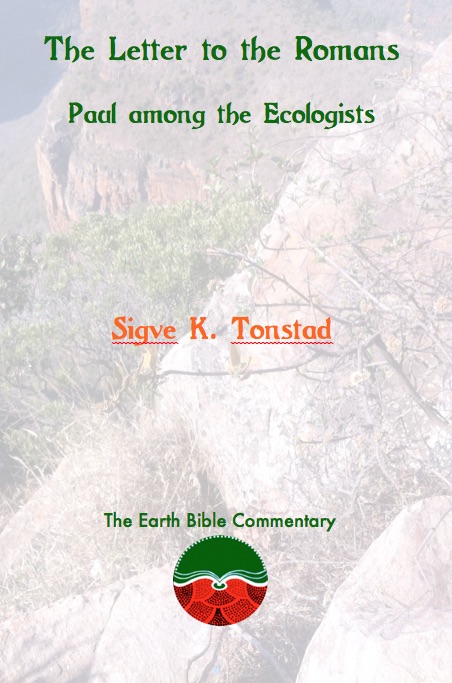
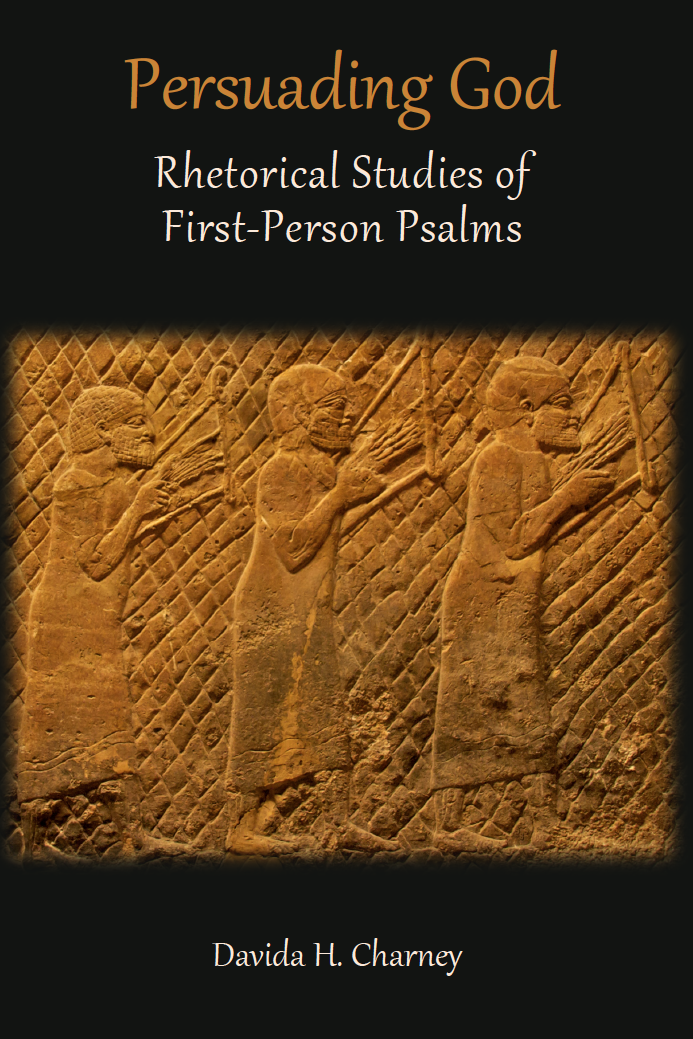
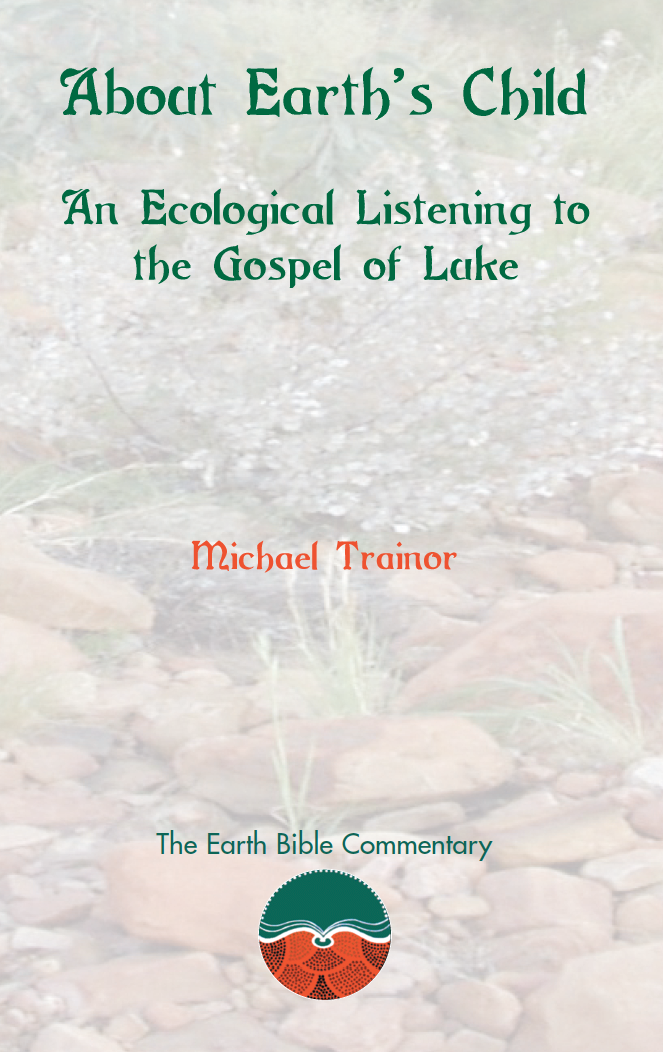
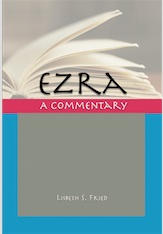
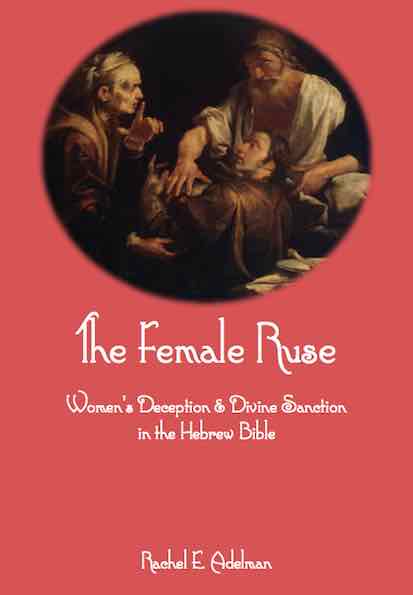
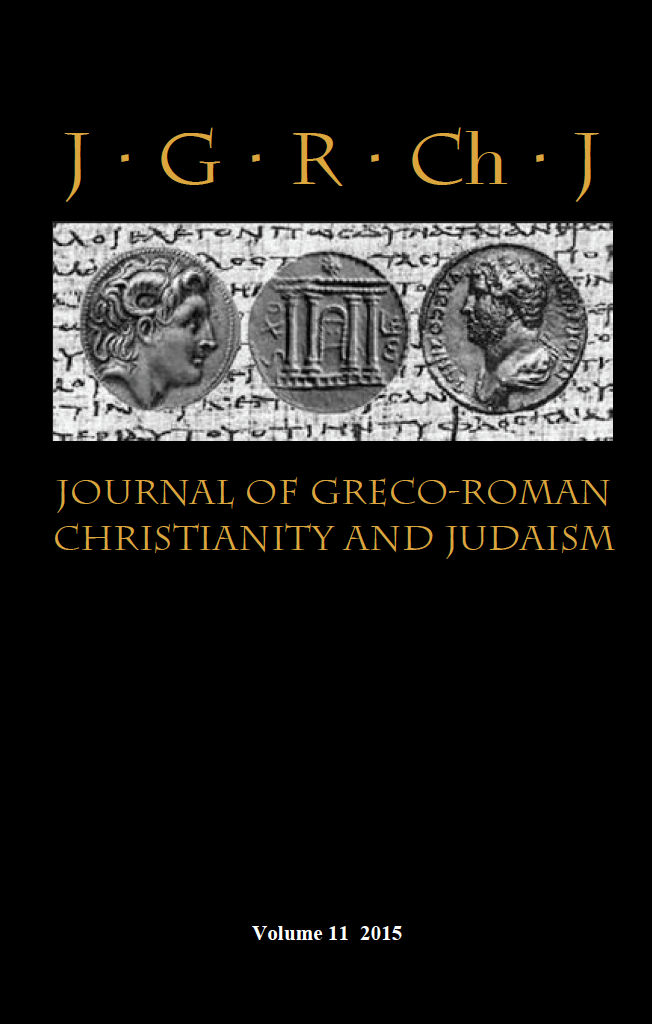
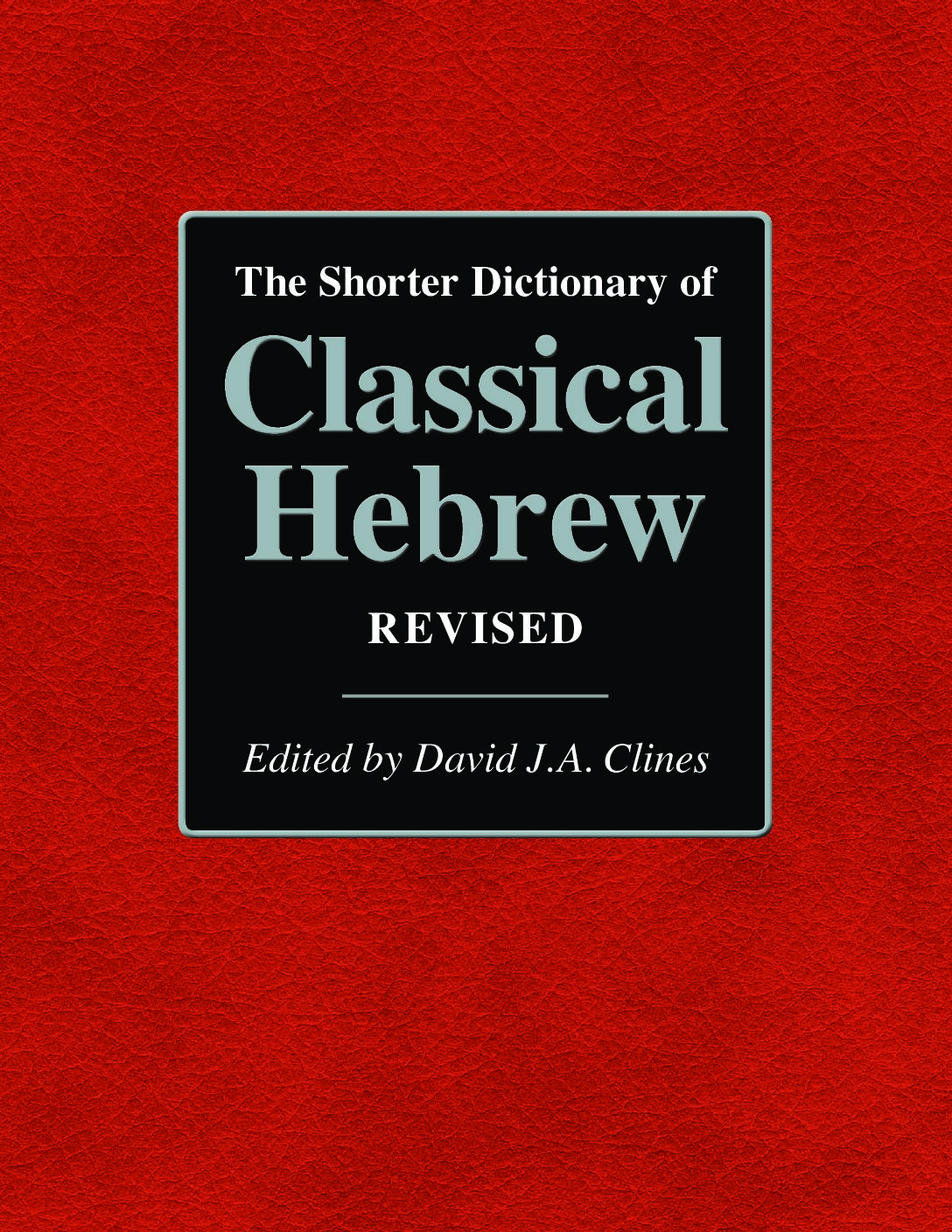

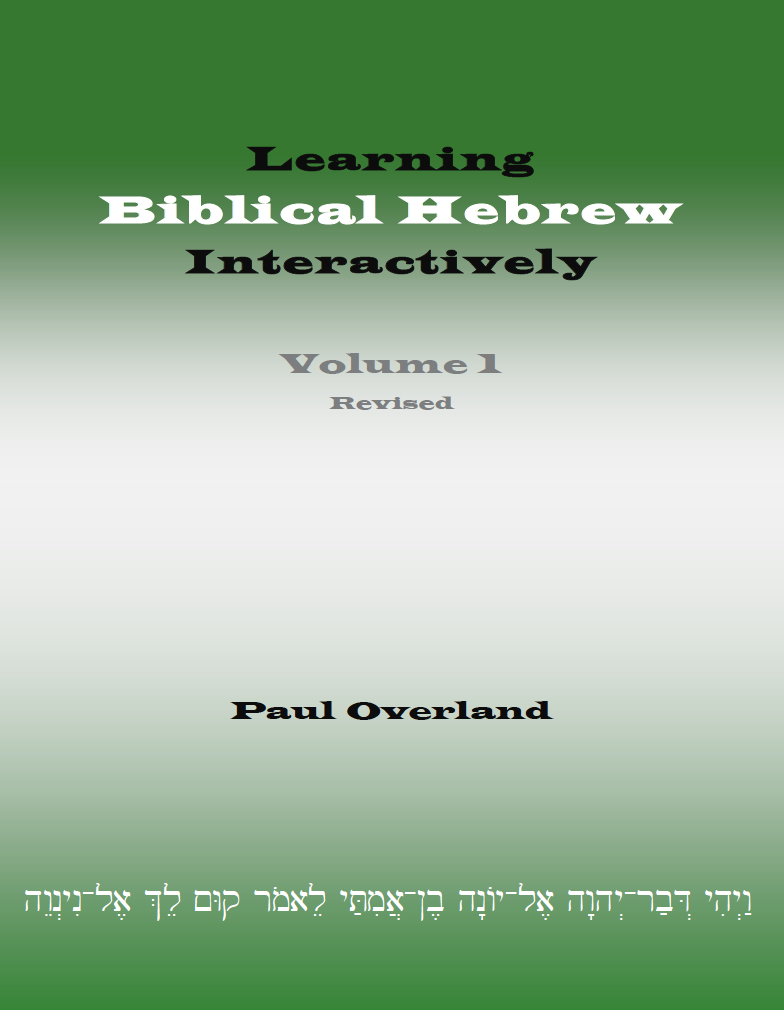

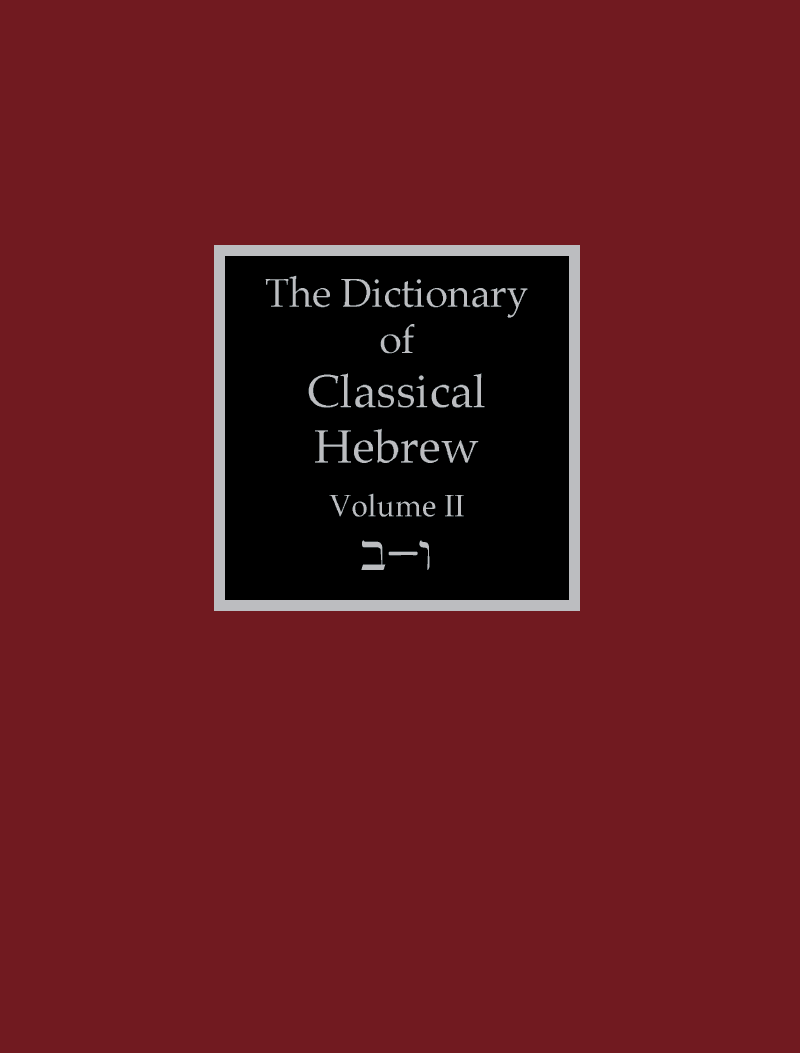
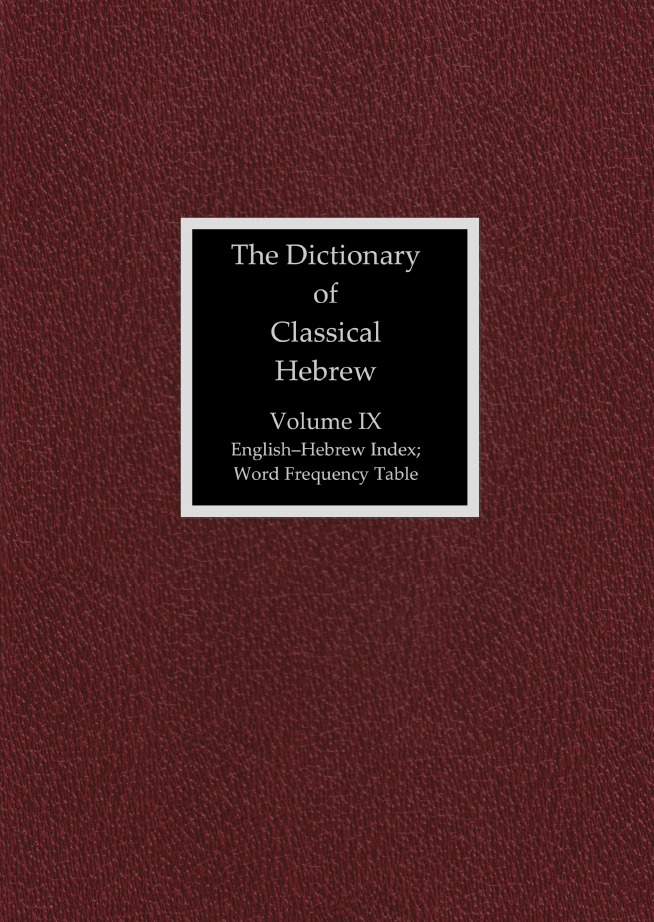




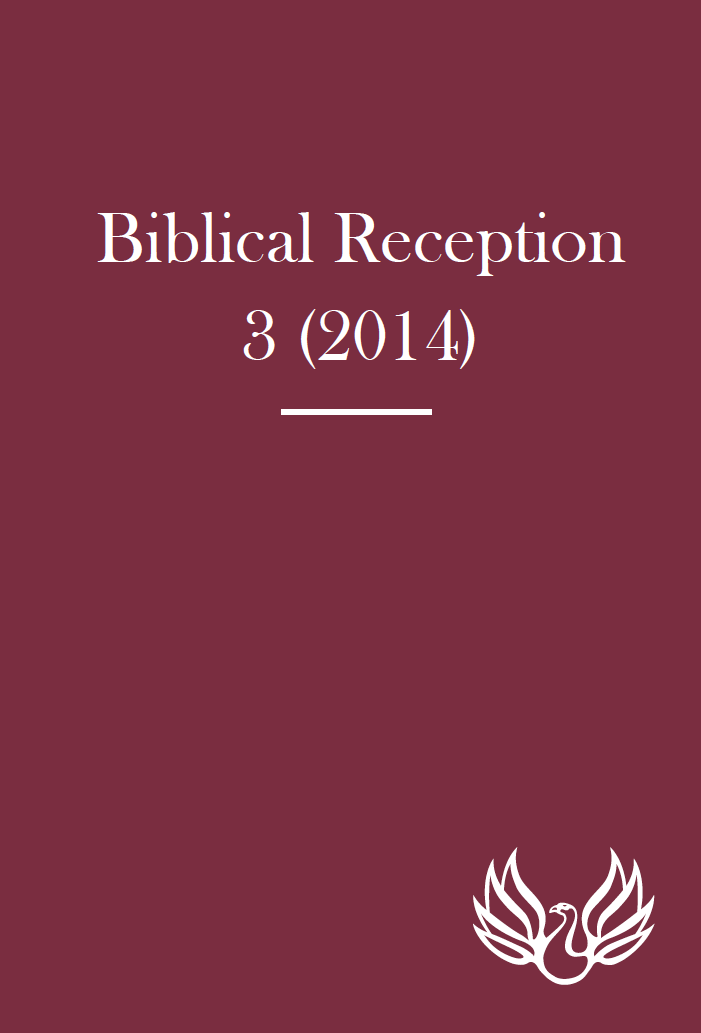
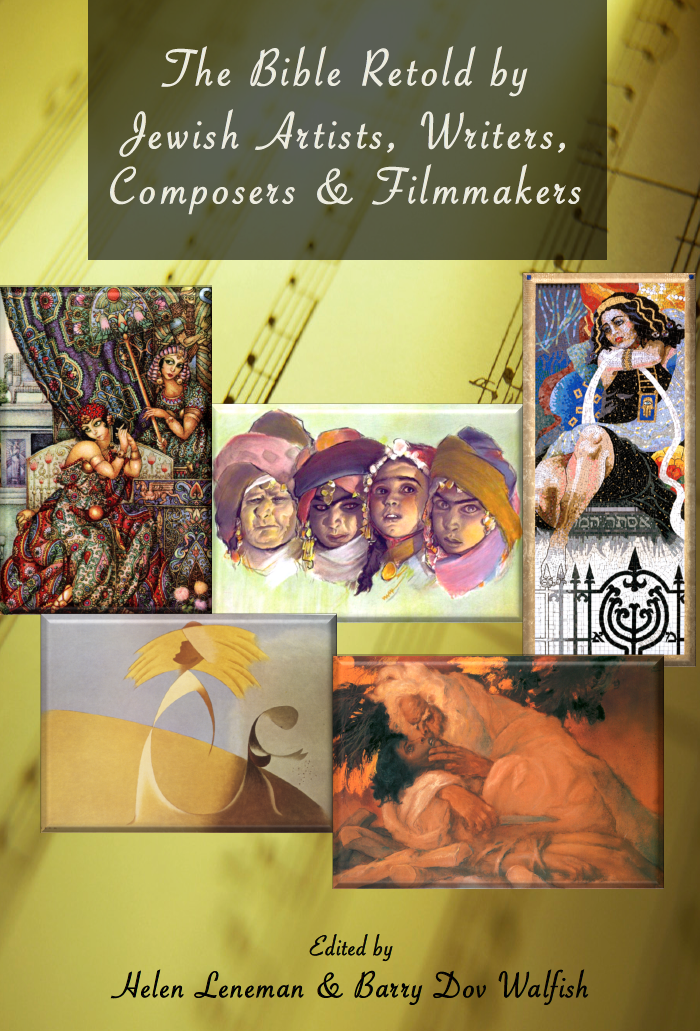

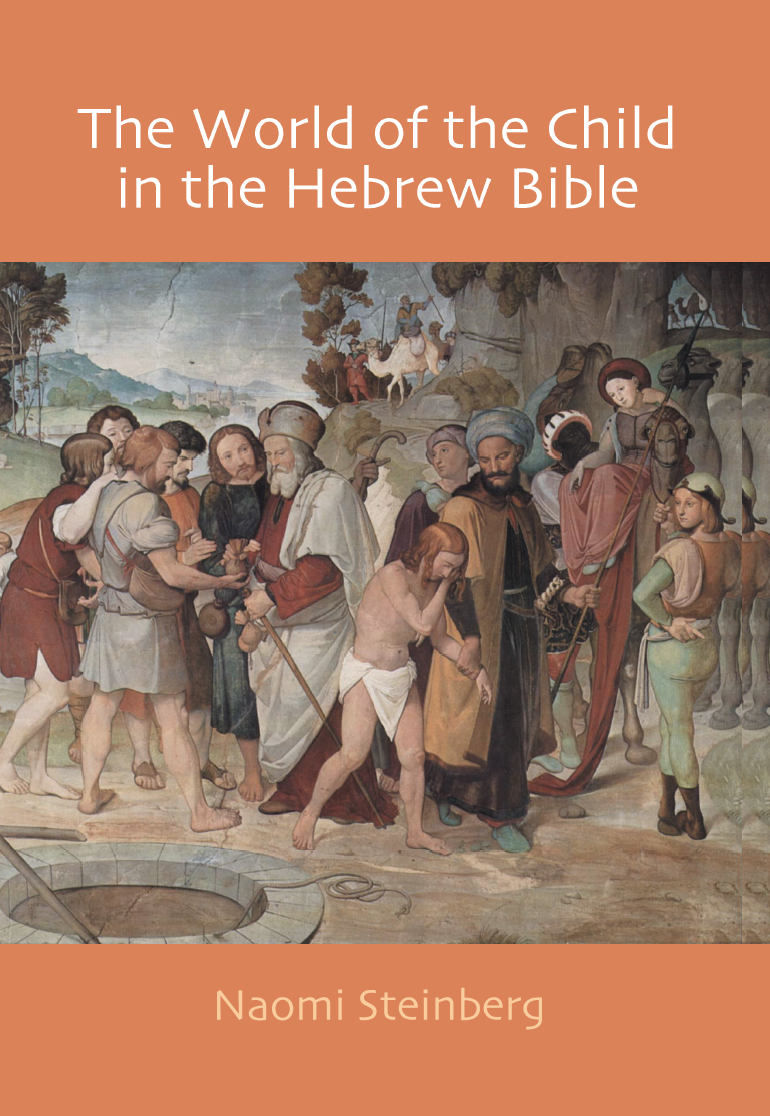

Habitat, Human, and Holy: An Eco-Rhetorical Reading of the Gospel of Matthew
Habitat, Human, and Holy: An Eco-Rhetorical Reading of the Gospel of Matthew